
Scott's Last Expedition: Images From His Doomed South Pole Trek
Voyage into History
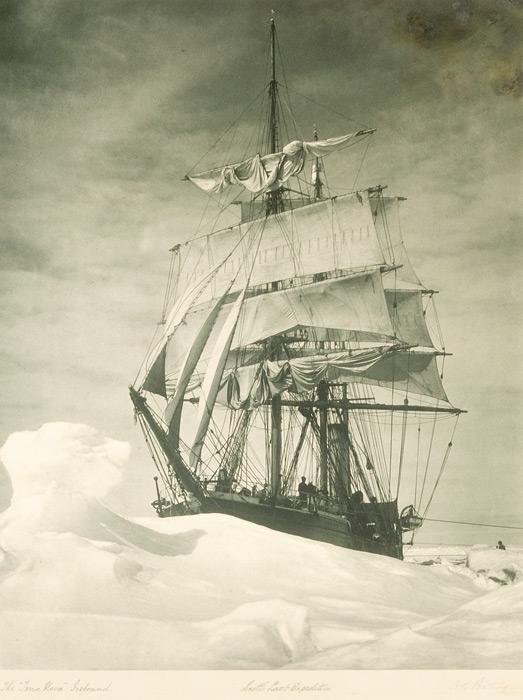
The Terra Nova, the ship that carried Robert Falcon Scott's ill-fated expedition to the frozen continent that would be his grave, in a photograph dated December 13, 1910.
Here, the ship is seen held up by the ice pack.
Scott did indeed reach the pole on January 17, 1912 only to discover that Norwegian explorer Roald Amundsen beat him there by several weeks, on December 14, 1911. Scott and his men, ill-equipped for the onset of the Antarctic winter, died on their trek back toward their base. Their frozen corpses, still bundled inside sleeping bags, along with diaries filled with last thoughts, were found in November 1912.
This photo is signed "H.G. Ponting." Herbert George Ponting was the official photographer for the expedition. Ponting didn't accompany the crew inland, in the race to reach the Pole, and thus survived to bring his photographs and even some early film footage back to civilization for all to see. He took all the photos included in this gallery. They are offered up for sale at an auction of polar exploration memorabilia on Sept. 20, 2011 at Leski Auctions in Melbourne, Australia.
Estimate: $3,000 - $5,000 Minimum Bid: $2,900
Sturdy Vessel
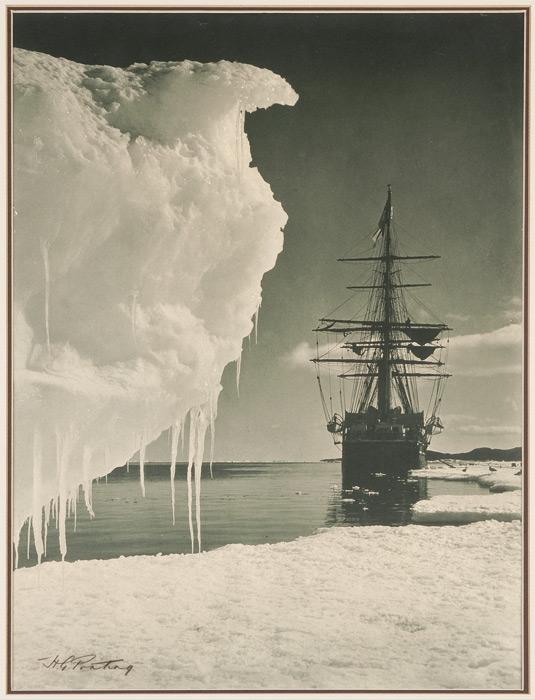
The photograph shows the Terra Nova tied up at the foot of the ice in Cape Evans on Ross Island, which lies just off the portion of the Antarctic coast that lies south of the middle of the Pacific Ocean.
It was at this site that Scott built his famed hut, which served as the expedition's hub of operations and still stands there today.
The aptly-named vessel was launched in 1884 as a whaling ship, and had voyaged to both the Arctic and Antarctic before the British explorer used the ship for his doomed attempt to be the first man to set foot at the South Pole.
Sign up for the Live Science daily newsletter now
Get the world’s most fascinating discoveries delivered straight to your inbox.
Estimate: $7,500 - $10,000 Minimum Bid: $9,000
Scott's Folly?
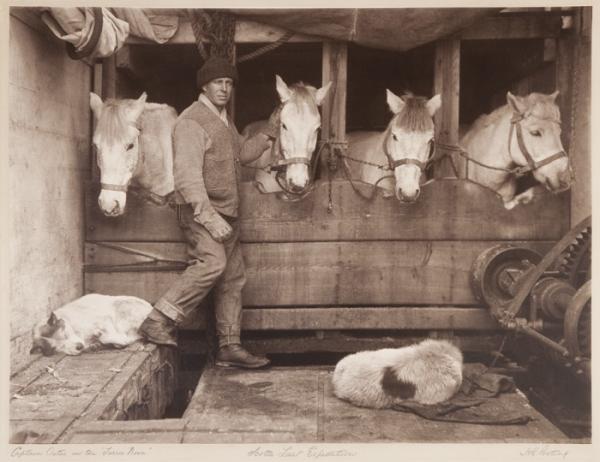
Aboard the Terra Nova, Captain Lawrence Oates attends to his charges 19 Siberian ponies. Some point to Scott's insistence on using horses, creatures seemingly ill-suited for Antarctic trudges, as one of the downfalls of his expedition.
Oates was one of the four men Scott chose to accompany him on his final push to the pole. On March 16, 1912, the day before his 32nd birthday, an injured and sick Oates famously walked out of the team's tent into a blizzard to die, in hopes the men would be able to move faster without him. Scott recorded in his diary that Oates said, "I am just going outside and may be some time."
His body was never found.
Estimate: $3,000 - $5,000 Minimum Bid: $5,000
'Dog Team Resting'
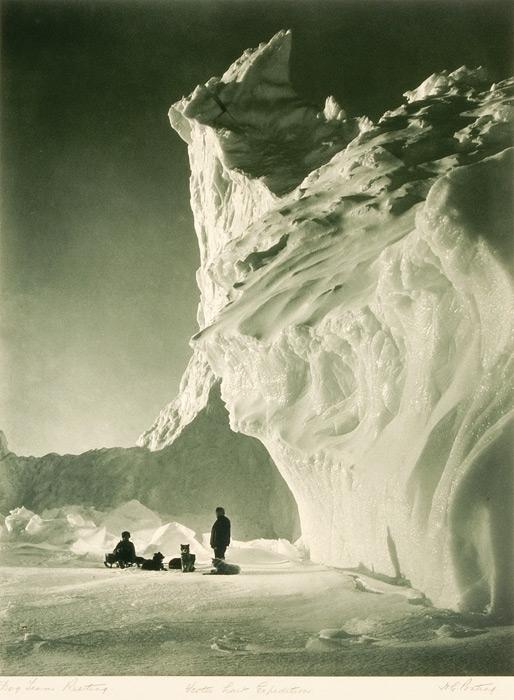
This photo was shot near the edge of the Barne Glacier, which comes to an end near Cape Evans and the site of Scott's hut. Scott's team did use some dogs to pull sledges toward the interior of the continent, but Amundsen made far greater use of the furry beasts, and to much greater advantage.
Estimate: $3,000 - $5,000 Minimum Bid: $2,300
Not-so-wild Wildlife
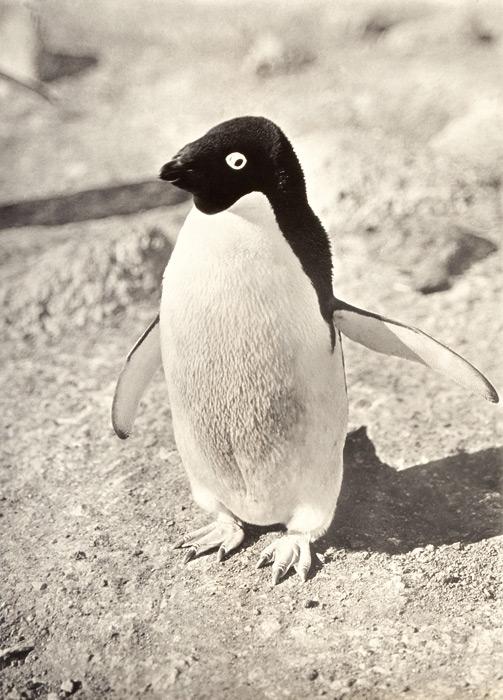
Ponting titled this image 'The "Glad Eye" Penguin. He apparently took the photograph in 1910. This is an Adelie penguin, a species that is abundant on Antarctic shorelines.
Scott wrote in his diary that penguins proved to be quite a nuisance to the expedition. The birds seemed to be endlessly curious, and regularly got too close to the dogs and often came to a sticky end because of it.
Estimate: $2,000 - $2,500 Minimum Bid: $1,500
Hard-won meals
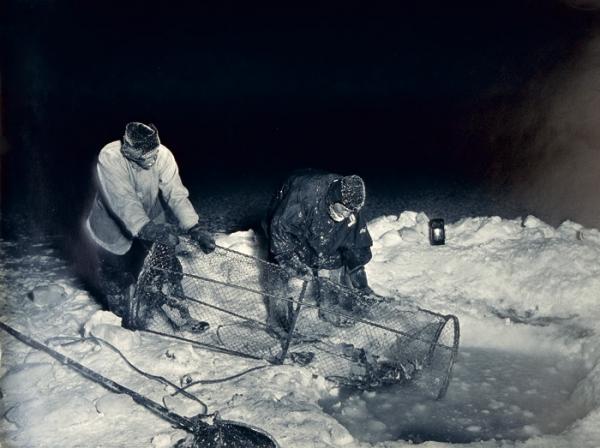
Ponting wrote on this photo, "This was taken by flashlight in the depth of the long polar night in a temperature of 45F below zero." The image shows the expedition's surgeon, Edward Atkinson, and the expedition's cook, Thomas Clissold, hauling up a fish trap that was set in the water beneath the ice.
Estimate: $3,000 - $5,000 Minimum Bid: $2,800
Polar Musings
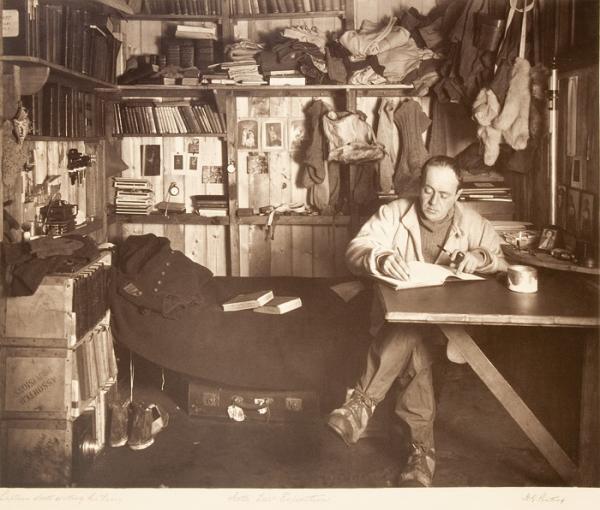
Robert Falcon Scott, pipe in hand, writes in his diary from the comfort of his hut, on October 7, 1911, three weeks before he departed for his final journey to the continent's lonely interior. Among the piles of books, fur mittens and other items that adorn the cabin's interior, several photographs were tacked to the walls. His wife Kathleen is pictured in the photograph to his left. Some pictures included their son Peter, who was born in 1909.
Estimate: $7,500 - $10,000 Minimum Bid: $9,000
Throughout his journey, Scott kept a faithful record of the increasingly disastrous trek. His final diary entry is dated March 29, 1912. He writes of a powerful storm, which is preventing him and his two remaining men from reaching a food depot 11 miles away. "We shall stick it out to the end, but we are getting weaker, of course, and the end cannot be far," he wrote. "It seems a pity, but I do not think I can write more.
R. Scott"
Then below, in a scrawling hand, is written,
"Last entry
For God's sake look after our people."









